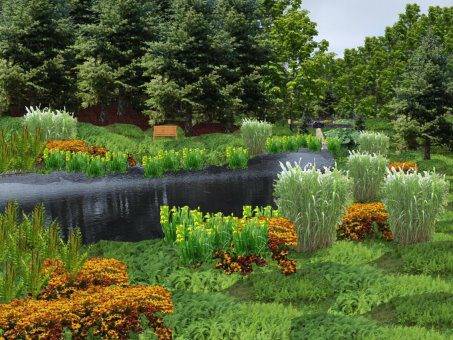Growing Information: Peppers CULTURE: 
Well-drained, fertile soil with abundant phosphorus and calcium is best.
GROWING SEEDLINGS: Sow seed in shallow flats, 4 seeds/in., 1/4″ deep, in late March or about 8 weeks prior to transplanting outdoors. If possible, maintain soil temperatures 80-90F (27-32C). Pepper seeds germinate very slowly in cooler soil. When the first true leaves just show, transplant 2-3″ apart in flats or 2″ cell-type containers. (The use of 2″ or larger cells will produce larger plants with better-developed root systems.) Grow plants at approx. 70F (21C) day and 60F (16C) nights.
COLD TREATMENT: Exposing the seedlings to controlled cold treatments can increase the number of flowers and fruits. When the third true leaf appears, grow the plants at a minimum night temp. of 53-55F (12-13C) for 4 weeks. The plants should receive full sunlight. After 4 weeks adjust temp. to 70F (21C) day and night. If this technique is used, peppers should be seeded 1-2 weeks earlier than usual.
TRANSPLANTING: Transplant out after frost when the soil is warm and weather is settled. Ideal seedlings have buds, but no open flowers. Set plants 12-18″ apart in rows 24-36″ apart, or 2 rows on poly/paper mulch, 18″ between plants. Water-in transplants using a high phosphorus solution.
ROW COVERS: Cold weather is buffered and earliness increased by using plastic mulch, especially in combination with a slitted row cover or lightweight fabric row cover supported by wire hoops. (See Mulch and Row Covers in Index.) Remove row covers when in sunny weather above 85F (29C) to prevent blossom drop and heat damage.
INSECT PESTS: Control climbing cutworms with Dipel, or with paper cylinder collars. Control tarnished plant bugs, aphids, and flea beetles with rotenone or pyrethrin.
DISEASES AND PROBLEMS: To prevent bacterial spot and phytopthora, drip irrigate only, plant only in well-drained soils, minimize soil compaction, follow a 4-year crop rotation. Sunscald is caused by inadequate foliage. Prevent blossom end rot with adequate soil calcium and regular moisture. Big bushy plants with few peppers can be caused by an excess of nitrogen, hot or cold temperature extremes during the flowering period, tarnished plant bug injury, and choice of late, poorly-adapted varieties.
BACTERIAL SPOT NOTICE: Bacterial spot can be seed borne. All Johnny’s pepper seed lots are tested for bacterial spot, and we chlorine wash any positive lots. No treatment can insure absolute freedom from disease.
NOTE: A disease-free test result does not guarantee a seed lot to be disease-free, only that in the sample tested, the pathogen targeted was not found.
HARVEST AND STORAGE: Pick the first peppers promptly when they reach full size to encourage further fruit set. Wash and hold at 45F (7C) and 95% humidity.
DAYS TO MATURITY: Approximate days from transplanting outdoors to first pickings of full size fruit.
AVG. SEEDING RATE: 1/3 oz. (1,250 seeds at 80% germ.) per 1,000 plants; 4.6 oz. (18,150 seeds at 80% germ.) per acre of transplants (avg. 14,520 plants), 12″ between plants in rows 36″ apart.
TRANSPLANTS: Avg. 3,000 plants/oz., 45,000 plants/lb.
SEED SPECS: SEEDS/OZ.: 3,400-4,900 (avg. 4,000).
MINI: 0.2 gm., unless otherwise noted, (avg. 30 seeds).
THE BENEFITS OF PEPPERS The hot pepper family includes chile, cayenne, and jalapeno. Hot peppers are the way to go when looking for an energy boost. Capsaicin levels in hot peppers are high, and this is the pepper ingredient acknowledged for raising endorphin levels and improving mood. The health benefits of peppers are almost always linked to capsaicin, which is a vasodilator, meaning it causes blood vessels to widen. This enhances circulation and increases body temperature, which then raises metabolism. The effect also reduces body fat accumulation. The health benefits of peppers can also be found in sweet varieties. This group includes bell peppers in red, green, orange, and yellow. The sweeter the pepper, the lower the levels of capsaicin. While hot peppers with capsaicin are used in small quantities as spice, sweet peppers are used in larger quantities and served as vegetables. Though lacking in capsaicin, the sweet peppers still offer a big nutritional boost. They’re full of vitamin A, vitamin C, vitamin K, and potassium. The riper the sweet pepper, the sweeter the taste and the more concentrated the nutrients. Red is the ripest, and therefore the sweetest, and green is a bit more bitter and not ripe. Sweet peppers also contain lycopene, which is said to protect against prostate cancer. Red sweet peppers contain beta-cryptoxanthin, a substance being studied to lower the risk of lung cancer. The health benefits of peppers are still being studied, but with all the benefits already uncovered, they’re a sure bet for healthy choice.

Recent Comments